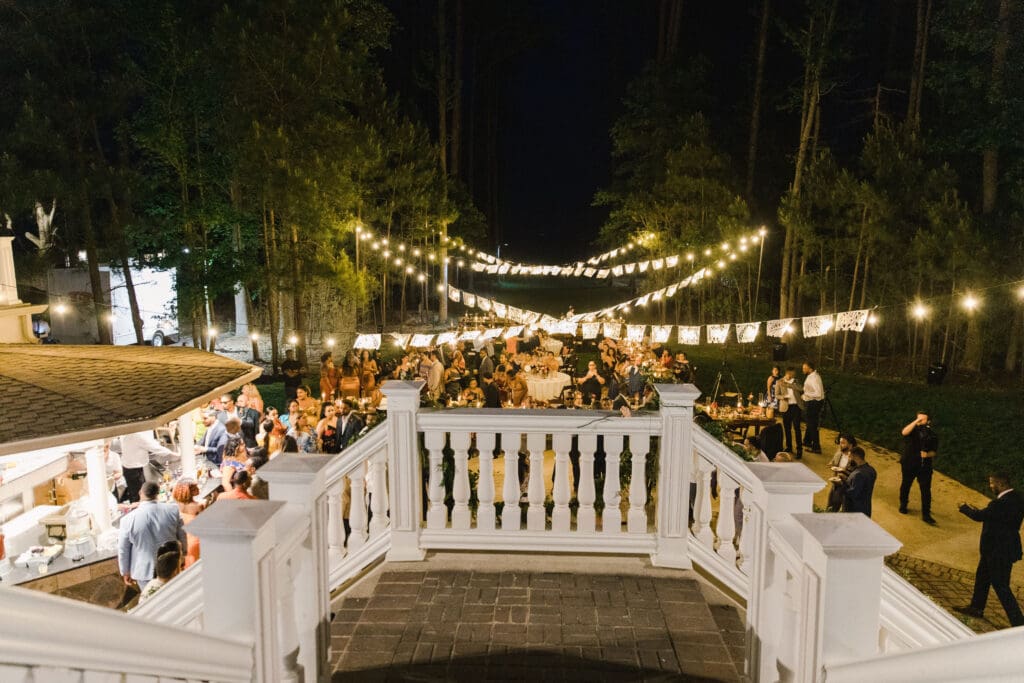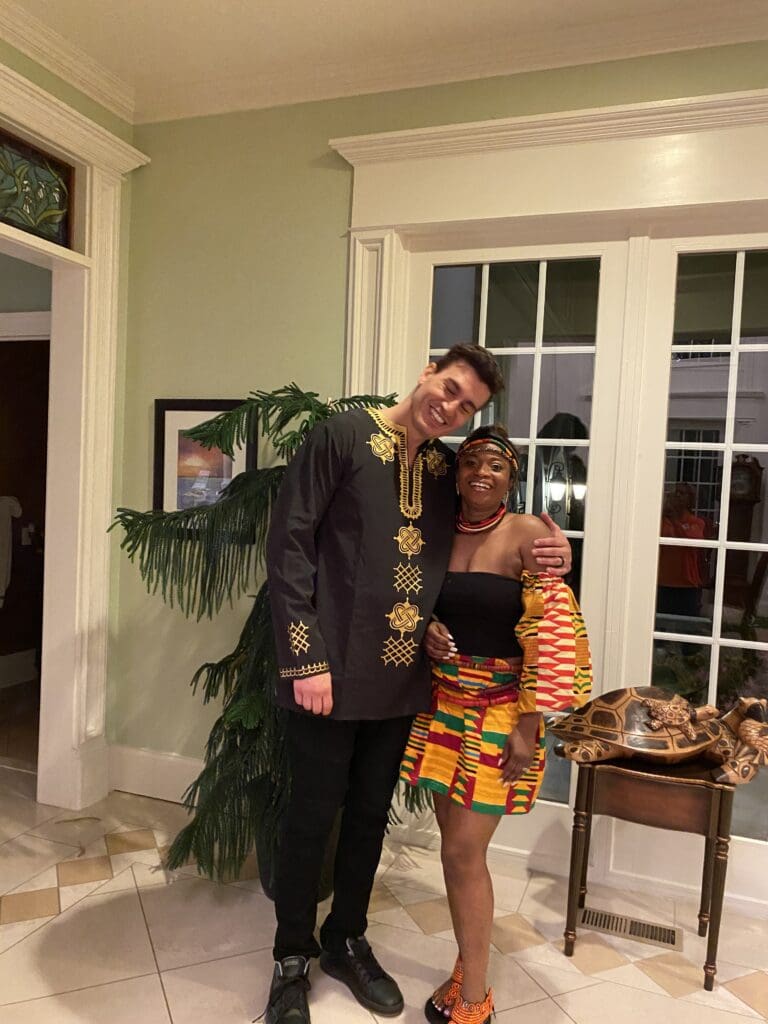Ways to Incorporate Traditions, Customs and Rituals to personalize your wedding at Dawn On the Chesapeake.

Good Luck Rituals and Symbols in a Wedding: A Cultural Celebration of Hope and Happiness
Weddings are among the most significant milestones in a person’s life, steeped in centuries of traditions and symbolic acts meant to usher in joy, prosperity, and above all, good luck. Across cultures and continents, couples have embraced a wide variety of rituals and symbols in their weddings that are believed to ward off bad fortune and attract blessings. From something old, something new, to breaking glass and jumping the broom, these customs are more than quaint practices — they are meaningful expressions of love, continuity, and hope for the future.
A “Lucky In Love” theme or additional rituals for “insurance” is a great way to personalize your wedding. At Dawn On the Chesapeakehttps://dawnonthechesapeake.com a waterfront wedding Venue in Maryland we encourage and embrace cultural and good fortune traditions. There are various traditions, customs, and rituals that can be incorporated into your wedding to symbolize good fortune, love, and positivity. This is by no means a complete listing or even an authoritative one, just fun suggestions to be used or discarded as you see fit.
There is a Universal Desire to incorporate Good Fortune
At the heart of wedding rituals lies a universal desire: to start a marriage on the right foot. Whether it’s invoking blessings from ancestors, spiritual beings, or nature itself, good luck traditions speak to the human instinct to seek protection during life’s transitions. These rituals help calm nerves, connect families, and frame the occasion with a sense of continuity — linking the couple’s present to their cultural and familial past.
1. Pre-Wedding Rituals for Luck that we encourage at Dawn on the Chesapeake, a waterfront Wedding Venue
- Four-Leaf Clovers: Incorporate four-leaf clover motifs in your wedding decor or invitations, as they represent good luck.
- Gifting of Tokens: Friends and family can give the couple tokens of good fortune, like horseshoes or lucky pennies, during pre-wedding celebrations.
- Venue Selection: Choose a venue with symbolic significance, such as a garden (fertility), a beach (tranquility), or a historical site (heritage and luck). Dawn On the Chesapeake is blessed to be surrounded with natural forestry, beautiful garden elements and wide open Chesapeake Bay shoreline.
- Nature-Inspired Decor: Incorporate natural elements like flowers, stones, and colors that symbolize love and luck in your wedding decor.
- Rain on your wedding day. Dawn on the Chesapeake is at its best as an outdoor Venue,so of course we never wish for rain. However, did you know, although it might seem inconvenient, rain on your wedding day is believed to symbolize fertility and cleansing. Additionally, seeing a rainbow is a sign of good fortune and happiness.
2. Personalized Ceremony Elements www.dawnonthechesapeake.com

- Vow Writing Station: Set up a station for guests to write down wishes or pieces of advice for the couple on personalized cards. These can be read during the ceremony or kept in a memory box.
- Lucky Symbols: Include symbols of good luck in your ceremony decor, such as elephants, dragons, or other culturally significant items.
- Unity Rituals: Customize a unity ceremony that resonates with your love story, such as planting a tree at home, blending different colored sands, or lighting candles together to symbolize your union.
3. Incorporating Family Traditions
- Heirloom Jewelry: Wear or carry a piece of jewelry that has been passed down through generations for love and luck.
- Family Blessings: Ask family members to offer their blessings or read meaningful quotes about love and luck during the ceremony.
Symbolic Gestures During the Reception
- Dance of Luck: Start your reception with a special dance that symbolizes good fortune, inviting guests to join in for blessings and joy.
- Lucky Wish Tree: Set up a wish tree where guests can hang their well-wishes for the couple on decorated cards.
- Color Themes: Use colors that represent love and luck (like red for good fortune in some cultures) in your wedding palette.
- Photo Displays: Create a display of photos showcasing the couple’s journey, surrounded by symbols of love, luck, and happiness.
4. Cultural Traditions:

Here at Dawn On the Chesapeake, http://www.dawnonthechesapeake.comwe welcome weddings of many different cultures and backgrounds.
- Cultural traditions at weddings vary widely around the world, reflecting the diverse customs, beliefs, and values of different societies. Many are to bring good luck to the couple in their marriage, some are to enhance the couple’s fertility, and some are based mainly on cultural traditions. While some traditions may have originated in specific cultures, many have become global as couples have become international, and many cross-cultural unions are taking place. And if it spells good luck in some cultures, why not put some extra guarantees in place and borrow it for your wedding if the custom appeals to you and your partner?
Something Old, Something New”

One of the most well-known good luck rituals in Western weddings is the rhyme: “Something old, something new, something borrowed, something blue — and a sixpence in your shoe.” Each item is symbolic. “Something old” represents continuity and connection with the bride’s past, maybe an item from a relative that the bride always admired growing up. Very often a piece of jewelry from a favorite aunt. “Something new” is a sign of optimism for the future. “Something borrowed” — ideally from a happily married friend or relative — brings good marital fortune. “Something blue” stands for fidelity and purity, while the often-overlooked sixpence is a wish for prosperity. Though many brides today follow this tradition with a playful nod, its symbolism still resonates.
Jumping the Broom and Breaking the Glass
Some good luck wedding rituals have roots in historical adversity and triumph. In African American culture, “jumping the broom” was a symbolic act used during slavery when legal marriage was forbidden. Today, it has become a celebratory gesture of entering into a committed life together and honoring ancestral resilience. Similarly, in Jewish weddings, the breaking of the glass at the end of the ceremony represents both the fragility of life and the couple’s commitment to stand together through hardship. The shattering sound also serves to scare away evil spirits — a recurring theme in many wedding customs worldwide.
Henna, Red Dresses, and Lucky Colors
In Indian weddings, the Mehndi ceremony is both a beauty ritual and a good luck charm. Intricate henna designs are applied to the bride’s hands and feet, believed to bring joy and ward off evil. The darker the henna stain, the more love and affection she is said to receive from her future husband and in-laws. In Chinese culture, red is the color of luck, prosperity, and happiness — brides often wear traditional red qipaos or cheongsams. Even the envelopes for monetary gifts (hongbao) are red, ensuring that good luck follows the couple into their new life together.
The Money Dance
The money dance, also known as the dollar dance or apron dance, is a wedding tradition in various cultures where guests pay to dance with the bride and or groom. This custom is believed to bring good fortune and prosperity to newlyweds. Guests typically pin money to the bride’s dress or place it in a special apron or bag, symbolizing their support and well wishes for the couple’s future. The money dance is a fun and interactive way to celebrate the union and contribute to the couple’s financial start together.
Tossing Bouquets
Western ceremonies often end with the bouquet toss — a light-hearted tradition with symbolic roots. The lucky guest who catches the bouquet is said to be the next to marry. This reflects the passing of good fortune from one bride to another.
The Wedding Ring
The wedding ring itself is rich in symbolism: circular, with no beginning or end, representing eternal love. In some cultures, such as Irish or Scottish traditions, rings may be inscribed with Claddagh symbols — hands, heart, and crown — representing friendship, love, and loyalty.
Post-Wedding Rituals
- Message in a Bottle: After the ceremony, guests can write messages or wishes for the couple and place them in a bottle to be opened on a future anniversary.
- Lucky Charms: Hand out personalized favors, such as keychains or trinkets inscribed with good luck messages, for guests to take home.
Good Luck Rituals are More Than Just Superstition
While modern weddings may include these rituals with a wink and a smile, their power lies in the meaning couples ascribe to them. Good luck rituals are not simply superstitions — they are bridges between generations, cultures, and beliefs. They bring emotional depth and personal resonance to the ceremony, reminding everyone that love, like luck, is both a mystery and a gift. Whether it’s tying knots, wearing charms, or following the footsteps of ancestors, wedding good luck symbols are heartfelt ways to honor tradition and usher in a hopeful, happy future.
Personalizing your wedding with traditions, customs, and rituals that emphasize luck and love can create a memorable personalized and heartfelt experience. By blending meaningful elements from different cultures and incorporating personal touches, you can celebrate your unique love story while inviting good fortune into your married life. If it will not cause injury or damages, why not incorporate a little bit of “good luck” insurance in your happily ever after?
Dawn on the Chesapeakehttp://www.dawnonthechesapeake.com is a locally owned and operated business located in southern Maryland. We sincerely hope to encourage couples to learn more about the value and importance of choosing a locally owned business when it’s time to book your wedding venue & vendors. With locally owned venues you will often see a higher level of hospitality, better communication and a greater desire to truly ensure your wedding exceeds expectations. We are thrilled to support wedding venue owners from around the country with a weekly shout out in our blog. you can find locally owned wedding venues featured on this wedding venue map.
- Oaks of Devonaire, Oaks of Devonaire Blog, Oaks of Devonaire Contact
- Bluestone Estate, Bluestone Estate Blog, Bluestone Estate Contact
- Eden Farms Weddings, Eden Farms Weddings Blog, Eden Farms Weddings Contact
- El Tango Reception Hall, El Tango Receptions Hall Blog, El Tango Reception Hall Contact
- Dream Ranch Events, Dream Ranch Events Blog, Dream Ranch Events Contact
- Livingstone Event Space, Livingstone Event Space Blog, Livingstone Event Space Contant
